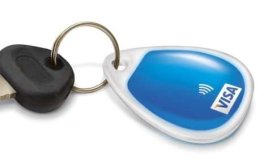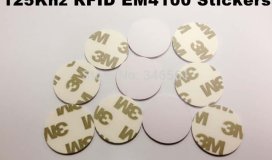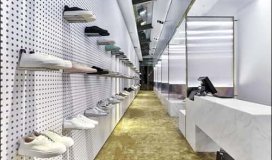Mar Pizza, one of the largest business owners of Domino's Pizza franchises, is installing an Internet of Things system with ZigBee-based technology from Unified Office to manage temperatures at its approximately 70 restaurants. The system consists of wireless temperature sensors transmitting information to a hub at each site, and a cloud-based server on which the collected sensor data can be managed. The system is designed to enhance food-safety compliance and eliminate waste by improving food inventory management. In addition, Robert Scheiper, Mar Pizza's VP, says he expects the solution to reduce energy consumption.
Mar Pizza, headquartered in Paramount, Calif., operates its Domino's franchises in three states at more than 70 locations. The company employs between 1,000 and 5,000 workers.
Quick-service restaurants such as Mar Pizza are some of the most highly regulated businesses by health agencies, and must ensure that products are stored and cooked at proper temperatures at all times before customers consume them. Restaurant managers use various technologies to monitor temperatures for company records and health inspectors, but many manual systems can be too time-consuming. "A system that gives them real-time alerts on potentially dangerous situations can greatly reduce the amount of effort," Scheiper explains.
For managers who deal with multiple locations, real-time alerts and historical data can verify that procedures are being complied with. They can also point to new efficiencies that can be implemented. Mar Pizza's goal in implementing this solution, Scheiper says, is first and foremost to ensure that temperature records are collected and problems are detected.
Unified Office was launched approximately five years ago as a voice-over-IP (VoIP) service provider to manage customers' business communications. For the past three years, it has been offering its services to Mar Pizza and other Domino's franchises. The system consists of a hybrid cloud architecture for routing phone calls and phone networks.
Recently, Unified Office expanded to an IoT solution that would include sensor data. This helps the company manage information about what is happening at a business beyond phone and communication networks, explains Ray Pasquale, Unified Office's CEO.
The company uses a hub device—about the size of two packs of cigarettes—that is installed at a business, along with the phone server device already installed for VoIP customers. The hub is designed to collect sensor data using its built-in ZigBee-, Z-Wave- and Bluetooth-based transponder to receive transmissions from sensors, and a wired Ethernet connection to forward that information to the cloud-based server, on which software collects, interprets and manages the data. Unified Office uses hubs and sensors from third-party providers.
During the past year, Mar Pizza has piloted the technology at about a dozen restaurants, with sensors that detect ambient temperatures installed in coolers and work areas. The sensors captured temperature readings at predetermined intervals and transmitted that data to the hub, which forwarded the readings to the server. Restaurant managers or other authorized personnel could then sign into the software and view each site's real-time and historic temperature readings.
The sensors can also detect motion, thereby enabling users to create rules within the system, such as changing settings for heating, ventilation and air conditioning (HVAC), based on occupancy. What's more, the system includes door contact sensors to detect when a cooler door is open, and for how long it remains ajar. In the latter case, the software can determine if there is a problem and alert authorized parties.
The data is not only of value in real time, Pasquale says—it can also be leveraged for historic analysis purposes. For instance, he explains, "If you own a hundred stores, you'll want to know if a compressor is starting to fail in one of those locations." That kind of information, he notes, would be out of reach without automation in most scenarios. But if the sensor system were to detect rising temperatures within one cooler over a span of time, a malfunctioning compressor or other equipment could be identified before it failed. The system could also reduce energy costs, since it could detect if too much cooling were taking place, or if doors were being left open for lengthy periods of time.
More info visit rfidjournal.com



